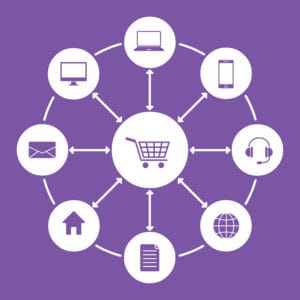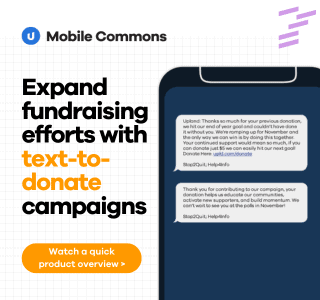 In a world where multichannel engagement is everything, how do you get people to turn those channels on?
In a world where multichannel engagement is everything, how do you get people to turn those channels on?
The problem has everything to do with perception: As a marketer with a compelling story to tell, email, social media, and mobile apps are viewed as individual communications channels that each serve their own purpose. But to consumers, it all blends together and is seen as same message across different platforms.
So what’s the solution? Knowing that multichannel engagement can be critical to a brand’s ultimate success, is there an effective way to nudge consumers from one channel to the next?
The answer is yes—through text messaging.
Text messaging, or SMS marketing (for “short message service” marketing), gives consumers the opportunity to decide for themselves which channels they’ll use to connect with your brand. But it’s not as simple as bombarding consumers with a bunch of links and hoping for the best. Rather, the trick to a successful SMS campaign is ensuring that your messages are timely, personalized, and highly relevant, and the consumers who read them will soon be your customers.
Why Texting Works
Consider this: More than 90 percent of American adults own a mobile phone, and virtually every mobile phone available today can send or receive a text message.
Even better, they can do so without an Internet connection. Text messages are sent between cell phones, and cell phones rely on satellite signals—not data connections. Texting also works seamlessly across all mobile phones, regardless of make, model, or carrier.
 Text messaging campaigns also run on an opt-in only basis. In other words, companies must gain consent from people before they can send them any texts. One way someone can give consent is to text an advertised keyword to your shortcode. Another solution is to add a mobile number field to your web forms with the terms and conditions of your campaign clearly stated. And while this sounds like it limits your potential reach, it actually puts you in the driver’s seat. Write your texts well and they stand a good chance of being highly effective—and they won’t be misinterpreted as unwanted spam.
Text messaging campaigns also run on an opt-in only basis. In other words, companies must gain consent from people before they can send them any texts. One way someone can give consent is to text an advertised keyword to your shortcode. Another solution is to add a mobile number field to your web forms with the terms and conditions of your campaign clearly stated. And while this sounds like it limits your potential reach, it actually puts you in the driver’s seat. Write your texts well and they stand a good chance of being highly effective—and they won’t be misinterpreted as unwanted spam.
Finally, the direct link created between your brand and the consumer through a text messaging conversation is a huge advantage over other channels. This is in stark contrast to, say, a social media network, where you can only blast out the same message to everyone. Instead of a blanket statement, text messaging lets you personalize your outreach, and a direct address is the best way to get people to listen.
Text Writing 101: The Rules of Engagement
 Composing text messages to boost traffic to your channels is not the same thing as texting family or friends. Keep your message short and concise, and include a clear call to action. And forget about using “text speak” of “omg”s and “lol”s. Consumers may understand what you’re trying to say, but you’ll sound like an amateur and risk looking sloppy.
Composing text messages to boost traffic to your channels is not the same thing as texting family or friends. Keep your message short and concise, and include a clear call to action. And forget about using “text speak” of “omg”s and “lol”s. Consumers may understand what you’re trying to say, but you’ll sound like an amateur and risk looking sloppy.
A key to a successful SMS campaign is keeping things personal. Use information you already have on your customers (zip codes, gender, age, etc.) to send customized texts that are relevant to them. For example, if you’re trying to promote an in-store event that is only taking place in one city, send your texts to consumers in that region—not to people on the other side of the country. You can also help your cause by signing your texts with a real name associated with your brand. Your message is likely to resonate with more readers when they see it was sent by your CEO.
Three examples of multichannel engagement using SMS
If you take the time to write your messages carefully, SMS can be a great way to direct consumers to your other platforms, where you can then encourage them to become loyal customers. Here are three sample text messages designed to encourage multichannel engagement:
Goal: Get consumers to click on a link to the mobile web
Hi Sam, I thought you might like to read my latest blog post on “Ten Creative Gift Ideas for Secret Santa.” Check it out here! http://lil.ms/4li92nv -Jenny@MC
A text message with a trackable short link is useful for directing consumers to a mobile-friendly webpage, or in this case, to a blog post, where you can embed links to products in your online store.
 Goal: Get consumers to visit your brick-and-mortar store
Goal: Get consumers to visit your brick-and-mortar store
Hi Sara, All products in our Brooklyn store are 50% off for the next 48 hours only! Show this message to the store manager to get your discount. -Jenny@MC
By tracking at which stores and on which products your customers use to redeem their mobile offer, you can learn even more about your customers and send more personalized texts in the future.
Goal: Get consumers to give you their email address
Hi Kim, Get a free T-shirt (and other exclusive offers) when you subscribe to our email newsletter. Reply with your email address to sign up now! -Jenny@MC
By collecting email addresses, you can create more comprehensive profiles on your customers and use the information to optimize your advertising efforts.
Getting consumers to engage with all of your channels is easy when you add text messaging to the mix. Create an SMS strategy that is personal and timely—and make it clear that your brand has something to say—and consumers will see they have reason to listen. For more information on how you can get started with text messaging today, contact us.


